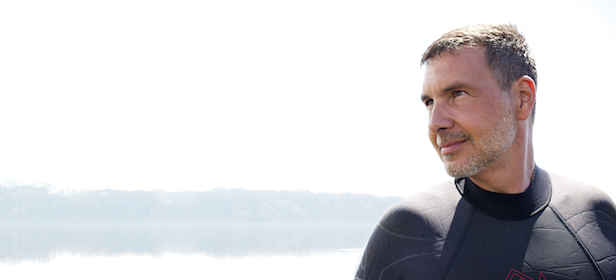Dauphin Island, AL
Assistant Professor in Auburn University’s School of Fisheries, Aquaculture & Aquatic Sciences and a marine extension specialist at the Alabama Cooperative Extension System

Bill works at Auburn University’s Shellfish Lab along the Gulf Coast to improve aquaculture production of marine invertebrates. Through applied research with local shellfish farmers, commercial and recreational shellfishermen and national and local organizations, he works closely with industry to answer pressing questions. In particular, Bill focuses on development of oyster mariculture in the southern U.S. as a sustainable, environmentally friendly industry that creates jobs, increases incomes, and preserves a traditional way of life.
Q&A
What brought you to your current line of work?
I grew up thinking I wanted to be a marine biologist, and was lucky enough to have that happen. As I went through school, though, I discovered that I really loved working with fishermen and resource managers, and putting the "science to work". After graduate school, I worked as a shellfish constable in Wellfleet, Massachusetts, before becoming an extension agent with Cape Cod Cooperative Extension and Woods Hole Sea Grant. I also ran a small oyster farm with my wife out in Cape Cod Bay in Eastham, Massachusetts. I moved down to the beautiful Gulf Coast to begin my work with Auburn University in 2009, where I’m lucky enough to do very similar work.
How does shellfish aquaculture support better marine stewardship?
In my opinion, there are no more dedicated stewards of our oceans than the families that make their living from those waters. Yet, our fisheries have been challenged. At the same time, at least in North America, there is a sense among some that the oceans should be "preserved", untouched by humans. I, however, genuinely believe that the sustainable (environmentally, economically, and socially) use of the ocean is our best opportunity to protect and improve the health of our seas. Shellfish aquaculture is one part of that solution. Having thriving coastal communities, where the business depends on water quality, strikes me as a very good long-term investment.
How does your work deviate from more traditional restoration efforts?
Shellfish restoration is fantastic, but the current approach is too limiting; many restoration ecologists don’t consider any restoration effort that leads to harvest as being true restoration. There is clear evidence, though, that enhancement of commercially harvested beds do provide a number of environmental benefits in addition to the economic and social benefits. Similarly, shellfish aquaculture provides a range of ecosystem services. I am hoping to change the traditional view of what "shellfish restoration" means.
What does success look like for you?
Certainly, obvious measures of the impact of this work include numbers of farms and acres permitted, number of oysters produced, annual profits, and additional jobs created. Ultimately, however, I will measure the success of this work in terms of how oyster farming becomes a part of the working waterfronts along the southern US coastline. I look to the example of clam farming in Cedar Key, Florida, where clam farming has become a major economic driver, but is also now a part of the community’s identity, with a strong sense of protecting the environment and their way of life.
What are some of your biggest accomplishments so far?
Although the operations are small and just beginning, I’ve been a part of getting four new commercial oyster farms established in Alabama (where there were none in the Gulf of Mexico in 2008). Working with colleagues like Dr. John Supan and Leslie Sturmer, I’ve also been able to assist others getting started in off-bottom oyster farming in Louisiana, Mississippi, Florida, and South Carolina. These farms have created jobs, created habitat, and put Gulf oysters on the premium oyster map. I’ve also been a part of a team that has set up a National Sea Grant training program for would-be oyster farmers, giving them valuable hands-on experience to put them in a better position to decide if this is what they want to do. Students in the program are tasked with each raising 25,000 oysters to market size, and given the option of starting their own commercial operation within a pre-permitted oyster farming park.



